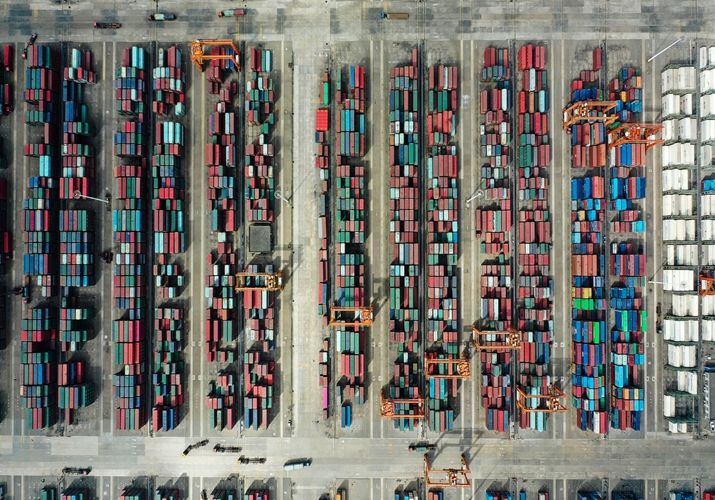| Business |
| Containers in short supply amid surging exports | |
|
|
 Containers in a bonded area of the Qinzhou Port in Guangxi Zhuang Autonomous Region, south China, on November 19(XINHUA)
Tracking spot and contractual freight rates from Chinese container ports for 12 shipping routes across the globe, the average China Containerized Freight Index stood at 1,411.98 on December 11, up by 6.7 percent from a week earlier, the Shanghai Shipping Exchange said.
The indicator rose nearly 70 percent since late May, roughly the same period when major Chinese ports saw a turnaround of container throughput.
Containers have never been so sought-after, Li Xiaohui, deputy manager of the technology department at a container company in Tianjin Port, said.
Affected by the novel coronavirus disease (COVID-19), container throughput at the port decreased at the beginning of the year, hitting a low of fewer than 1 million 20-foot equivalent units (TEUs) in February.
This large shipping hub in north China saw its container throughput increase for the first time in May, standing at 1.65 million TEUs. It rose by 6.1 percent year on year to more than 17.1 million TEUs in the first 11 months of the year, data showed.
In early November, the eight major shipping hubs, including Shanghai and Ningbo in the eastern province of Zhejiang, saw container throughput surge by 13.1 percent year on year, according to data from the China Ports and Harbors Association. Specifically, throughput for foreign trade increased by 11.5 percent from a year earlier.
As a result, container manufacturers have been working round the clock to meet the demand. The increasingly busy ports and the short supply of containers send a strong signal that foreign trade is gradually warming up, analysts said.
"Most of China's exports are transported by sea in containers. The uptrend of the freight index is in line with the increasing export volume," Yin Ruizhe, chief fixed-income analyst at China Merchants Securities Co. Ltd., said.
Taking the lead in economic recovery globally, China saw its exports jump by 21.1 percent year on year in November in U.S. dollar terms, the fastest growth since February 2018.
China is one of the first manufacturing giants to bounce back from the epidemic's fallout thanks to a slew of measures to resume production.
As a result, Chinese companies have received many international orders that might otherwise go to other countries, Li Qilin, council member of China Chief Economist Forum, said.
Industry insiders have noted the ups and downs of the foreign trade container business this year and warned of uncertainties facing ports.
Strict COVID-19 inspection measures will prolong ship stays at ports and affect loading efficiency, Deng Guosheng, General Manager of Guangzhou Port Company Ltd., said.
As China brings the epidemic under control and after the pandemic slows down globally, exports will continue to rise, driving up the foreign trade container business.
But the shipping capacity of liner companies has not fully recovered, and foreign ports' handling capacity has decreased amid the pandemic, affecting the returning speed of empty containers and leading to a short supply and volatility in freight rates, Deng said.
This is an edited version of an article published by Xinhua News Agency
Comments to yanwei@bjreview.com
|
|
||||||||||||||||||||||||||||||
|
